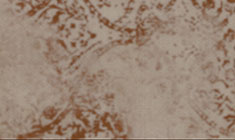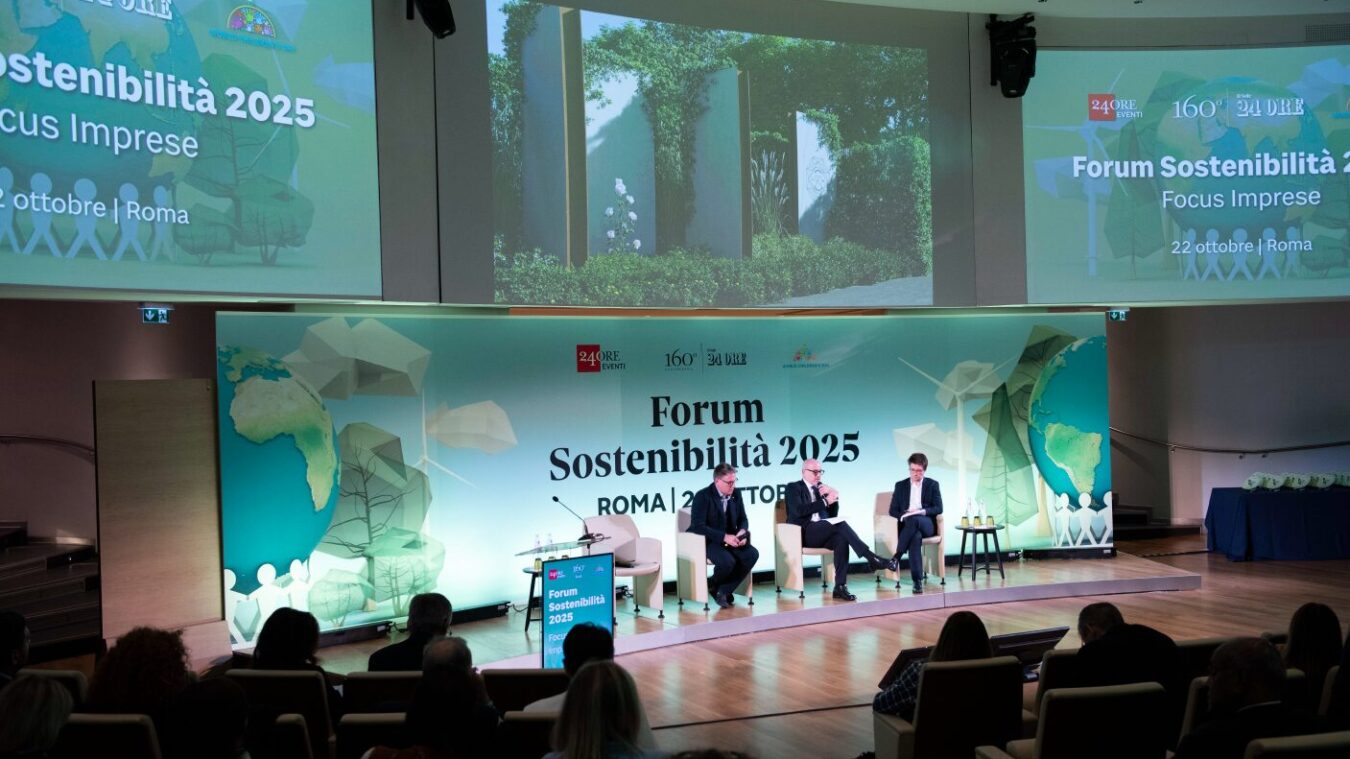On the occasion of the Sustainability Forum of Il Sole 24 Ore, one of Italy’s most important events on ESG topics held at the Auditorium della Tecnica in Rome, Marazzi Group presented a project that brings together business, architecture, and the environment: the Sassuolo linear park, an urban regeneration initiative that transforms an industrial wall into a green diaphragm between the factory and the city.
The general manager Leonardo Tavani and architect Dario Costi (Studio MC2 AA), in conversation with journalist Gianluca Dotti from Il Sole 24 Ore, explained how the project has become a symbol of sustainability and a bond with the local area.
90 years in the heart of Sassuolo
Gianluca Dotti: Director Tavani, this year Marazzi celebrates 90 years. You were born and raised in Sassuolo, a city that identifies with you and that you have helped to transform. How has this relationship with the area evolved?
Tavani: We are a company born in Sassuolo, now present in 146 countries but still deeply connected to this area. It all began in the 1930s, when our founder Filippo Marazzi, who ran a grocery store in the city center, saw the potential of ceramics not just as a functional material, but as an expression of beauty, innovation, and development for the community.
From that first factory, a solid story was born, made of growth, work, and deep roots.
Over time this bond has grown stronger and today finds new form in the Sassuolo linear park, a concrete act of urban regeneration and connection between industry and area through a green diaphragm.
To enhance our roots, this year we also restored the Drogheria Roteglia, where it all began: a symbolic space that tells the story of where we come from and who we are. The linear park, together with this restoration, represents the continuity between Marazzi’s origins and its vision for the future.
Turning a wall into a garden
Gianluca Dotti: Architect Costi, how did the project come about and what meaning does it have for Sassuolo and the ceramic district?
Costi: The project was born from a dialogue with Marazzi, as part of a broader process of urban and environmental regeneration of the ceramic district. When we started thinking about the relationship between the factory and the city, the idea emerged to transform the company’s perimeter wall into a linear park.
It’s a simple yet revolutionary gesture: demolishing a concrete wall and replacing it with an urban garden almost a kilometer long changes the face and perception of an entire neighborhood.
The initiative has several goals: to encourage renaturalization of the soil, improve air quality, absorb rainwater, and give the community back a place for connection and wellbeing.
Thousands of plants create a natural barrier that reduces noise and fine particulate matter, while the new light fence redefines the boundary between industry and city in a more harmonious way.
We were also inspired by the work of the great photographer Luigi Ghirri, who in the 1980s described Marazzi ceramics as the “backdrop of life.” Today, the large ceramic slabs suspended among the greenery recall that poetic vision, becoming the symbol of a new balance between nature, art, and industry.
A project that has already won over the community
Gianluca Dotti: How has the city responded to this transformation?
Costi: With enthusiasm. People living next to the production site now step outside and see a park instead of a wall: it’s a change that has an immediate impact on the wellbeing and pride of the neighborhood.
There is a spontaneous and positive participation: people stop, walk, watch the plants grow, talk to those working on the project. It’s proof that sustainability, when it is visible and shared, generates trust and a sense of belonging.
Sustainability as a business culture
Gianluca Dotti: Director Tavani, the park is a tangible symbol, but sustainability at Marazzi is part of a broader commitment. How do you interpret it in your daily work?
Tavani: For us, sustainability is not a stand-alone project, but a structural part of our identity. It’s a way of thinking and acting that involves people, processes, and the area.
We try to turn principles and values into tangible actions capable of creating real and lasting value.
In the 16th Sustainability Report of the Mohawk Industries group, we describe a concrete path: the Terramater collection, made with 60% recycled material; a 26% increase in training hours for employees; the Peopleness program, dedicated to people’s wellbeing; the growing use of renewable energy and Top Employers recognition for the ninth consecutive year.
These results show how innovation and responsibility can coexist, generating value for the company and the community.
For Marazzi, sustainability is also about collaboration: we work with institutions, partners, and citizens, because only by building together can we give strength to the future. The linear park is proof of this: a project born from dialogue between the public and private sectors, bringing together architecture, landscape, and participation.
A place to enjoy all year round
Gianluca Dotti: When will the park be completed and how will it be accessible for the city?
Costi: The park is already partly accessible and will be completed by next year. It was designed to change with the seasons, with plant species that alter color and form throughout the year.
Among the ceramic installations and the vegetation, it will become a place to observe and experience the neighborhood in a new way.
Tavani: The initiative is already changing the face of the area: the street is livelier, people stop, walk, pick flowers, and see a garden instead of a wall. It’s concrete proof of how an architectural gesture can regenerate a neighborhood and create a new sense of belonging.
































